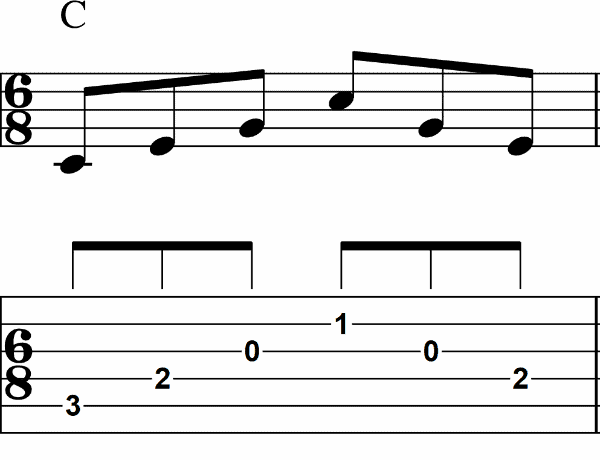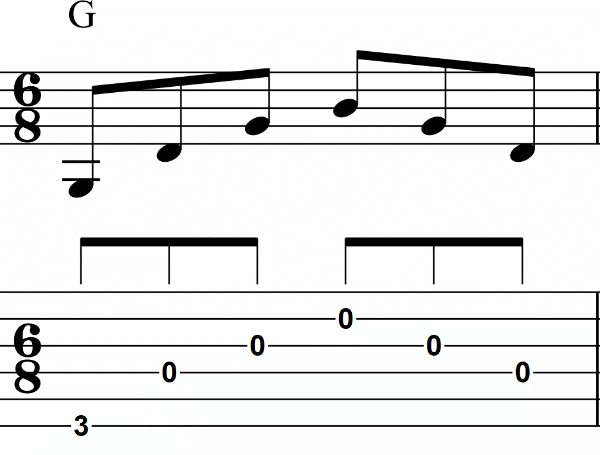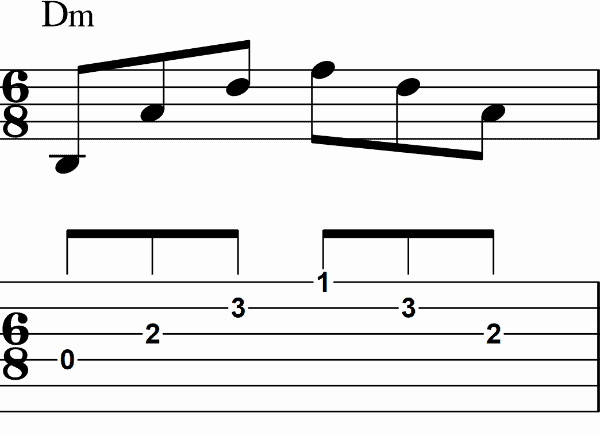Today we’re going to learn how to play Blue Moon, using easy guitar chords. There have been many versions of this classic song by the likes of Elvis Presley, Frank Sinatra, Billie Holiday and The Marcels.
I’m going to start with a version that features a very simple strum pattern and sounds great. If you wish to dig in deeper, I’m also going to give you a fingerpicking pattern that you can use as well. We’ll divide the song into two sections I’ll call verse and chorus. I have a sheet with the chords at the end of this post, which will be useful for this lesson. Let’s get started.
Intro and Verse
I usually play this song with a capo on the second fret as it suits my voice better. We are going to play it in the key of C and without a capo, but feel free to use one if needed. The guitar chords used in the majority of the song are fairly simple.
The progression is a common I vii IV V pattern, which some call a turnaround pattern. The progression in the key of C is C, Am, F (barred or not) and G.
C - Am - F - G
We’re going to repeat this progression 7 times for the verse. We’re going to play each chord with two strums and then start over. Let’s play that to map out the entire verse with the words.
The verse ends with C, F, C and C7. This is just a minor departure from the original progression, and it sets up the chorus.
On To The Chorus
The chorus basically uses the same progression as the verse, except that the F is substituted with a Dm. Also, the chorus progression starts in Dm. The substitution of an F for a Dm is fairly common (both chords share two out of three notes).
Let’s map out that progression with the words. Remember its Dm - G - C - Am. After the third time you play this progression, the song goes to D7 and then G for two bars on each chord. That takes us back to the verse. The form of the song is verse, chorus, verse 2, chorus and verse 2 (repeated).
Fingerpicking Pattern
This fingerpicking pattern starts with the thumb on the bass for the C chord. Your index, middle and ring finger will be resting on strings 4, 3, 2 respectively. After you hit the bass note, then you play the index, middle and finger in that order, and then back. We often refer to fingerpicking patterns by the order in which the strings are picked. This pattern would be 5 - 4 - 3 - 2 - 3 - 4.

To practice this fingerpicking pattern, it is important to go slow at first. Pick just one chord and stay on it while you get this pattern down. Try to keep your hand relaxed. Pull your fingers into your hand, and try not to move your entire hand too much.
This pattern is the same for the C and Am chord. If you do the non-bar F with a C on the bass, then the pattern stays the same.
For the G chord, we move the thumb to the sixth string as that’s where the chord starts. Therefore the pattern then becomes 6 - 4 - 3 - 2 - 3 - 4.
The chorus features the same pattern with just one change on the Dm chord. This is because the Dm has its bass on the fourth string, so then the pattern becomes 4 - 3 - 2 - 1 - 2- 3. When we put the chords and words together, then each chord lasts one round of the pattern.

Conclusion
There are several ways in which you can play the Blue Moon guitar chords. As usual, my recommendation is to break the song down into smaller segments so it is easier to learn. For this song it would really help to learn the pattern of the progression I vi IV V and get it comfortable.
When you get to the chorus, you can do the same. Learning the progressions as a whole unit is a much simpler way than looking at each chord as completely separate from the others.
Want some help?
If you'd like to learn more about Common Chord Patterns and their value, check out the Practical Guitar Theory course in Real Guitar Success.
Not a member yet? No problem. Sign up here FREE for 14 days. I’m hoping you stick around… but if not, the 2 weeks should be enough time to get the benefit from this lesson.
